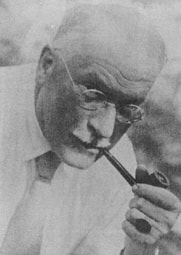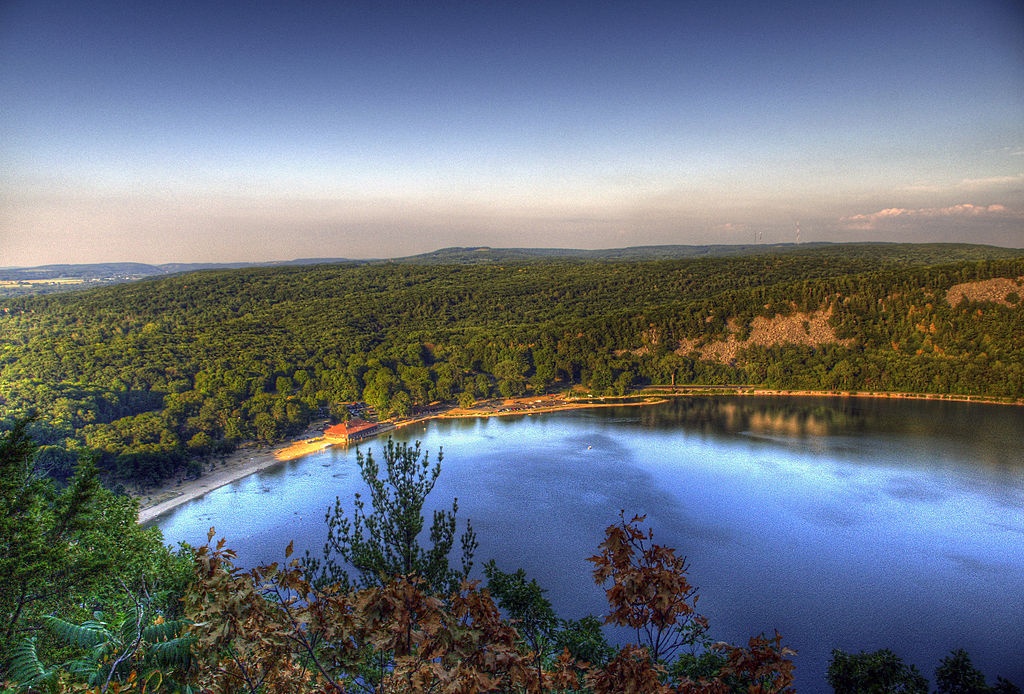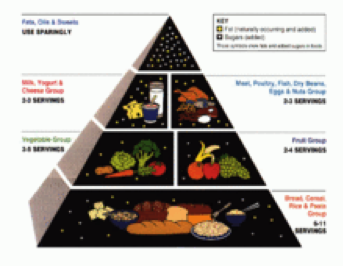|
“There seem, in fact, to be only two views we can hold about awe. Either it is a mere twist in the human mind, corresponding to nothing objective and serving no biological function, yet showing no tendency to disappear from that mind at its fullest development in poet, philosopher, or saint: or else it is a direct experience of the really supernatural, to which the name Revelation, might properly be given.” --C.S. Lewis, The Problem of Pain.
0 Comments
"Naturally the present tendency to destroy all tradition or render it unconscious could interrupt the normal process of development for several hundred years and substitute an interlude of barbarism. Wherever the Marxist utopia prevails, this has already happened...Loss of roots and lack of tradition neuroticize the masses and prepare them for collective hysteria. Collective hysteria calls for collective therapy, which consists in abolition of liberty and terrorization. Where rationalistic materialism holds sway, states tend to develop less into prisons than into lunatic asylums.”
--C.G. Jung, Aion. By Sarah Farmer Our ‘civilization’ has attempted to remove anything and everything that could possibly cause danger, distress, or discomfort. We are too safe, but on purpose. We are domesticating ourselves out of existence. Radiating cellphones mindlessly plug the right hands of billions across the world. Our feet no longer touch the earth, our eyes no longer behold the skies, our minds now never contemplate anything other than a menu screen or a bank account, and our hearts are now diseased and atrophied. We eat inside, sleep inside, work inside, exercise inside, and spend (probably for most of us) over 80% of our lives INSIDE.
When was the last time you got stung by bee? Felt the cold rain start pouring down on your shoulders? Went without air conditioning in the hot summer sun? Got your feet muddy? When was the last time you lived an entire day without checking to see what ‘time’ it was? Or who texted you? Enjoyed a nap or entire night’s sleep outside? When was the last time you traveled somewhere you wished to go, on foot? by Jason Jarrell & Sarah FarmerLocated south of Baraboo in Sauk County Wisconsin, Devil’s Lake is a place of natural wonder and legend. The central feature of the biggest State Park in Wisconsin, Devil’s Lake covers 360 acres, surrounded by quartzite bluffs reaching 500 feet in height. In 1832, a French agent of the American Fur Company named John de La Ronde visited the lake and noted that it was the echo effect of the bluffs and the “darkness of the place” which inspired the French Voyageurs to use the name Devil’s Lake(Butterfield 1880). La Ronde also mentioned an older, indigenous tradition: “The Indians gave it the name of Holy Water, declaring that there is a spirit or Manitou that resides there. I saw a quantity of tobacco…deposited there for the Manitou” (Butterfield 1880: 396). The quartzite bluffs surrounding this deceptively serene lake are of a unique composition, rendering it with intriguing purple and maroon streaks, which is caused by high concentrations of iron and hematite. This form of quartz is so unique to this region of Wisconsin that it has been named ‘Baraboo Quartz’. The “Indians” who considered the lake sacred were the Siouan speaking Ho-Chunk people, and their beliefs concerning the lake were part of an ancient and widespread cosmological model of the Eastern Woodlands, the Great Lakes, and the Plains. Ancient Model of the Cosmos The model consists of a tiered or layered cosmos comprised of three basic “worlds”. The Sky World is the region above, where birds and flying things live. It is also the habitation of the great Thunderbirds, the stars, the sun and moon, and the creator. The Earth World is the domain of mankind, plants, animals, and natural features. It could be called “our world” or the world of the living. The Earth World is a flat island or disk situated upon—and surrounded by—a primordial sea. The third world is the Underworld, a vast water filled region immediately beneath the Earth World. This Underworld is the home of fish, snakes, and aquatic animals. It is also the domain of the Great Serpent and his minions. These powerful beings often enter the Earth World through natural springs, rivers, and lakes, which are connected to the Underworld oceans by a system of caverns. Characteristics of the Great Serpent The Great Serpent manifests in a multiplicity of forms, which fall between two extremes: a gigantic horned snake and a hybrid of feline and serpent features usually known as the Underwater Panther (Lankford 2007). He is also known to be the ruler or Ogimaa(“boss”) of a race of beings of similar form (Ibid). The Great Serpent exerts a deadly influence upon the Earth World. Emerging through natural waterways, the Great Serpent destroys human beings with drowning, floods, and other calamities, including disease. The Underworld powers are also known to kidnap children and infants. The Great Serpent is also considered a source of powerful magic or medicine, which can give victory in the hunt, warfare, love, and curing or cursing individuals or entire populations (Smith 1995). One of the most commonly cited benefits of allying with the Underworld ruler is long life. Among the Anishnaabeg peoples of the northeast, medicine men that deal with the Underworld serpents are often considered practitioners of “bad medicine” (Smith 1995). Enemies of the Great Serpents The Thunderbirds of the Sky World wage an endless war upon the denizens of the Underworld. As the Great Serpents or Panthers emerge from beneath, the Thunderbirds bring down lightning and fire upon them. The Thunderers also seize their enemies and carry them into the air, tearing them to pieces. As such, the Thunderbirds are considered the allies and helpers of mankind, and are treated with great respect by Native American peoples (Smith 1995). Their war against the serpents is essential to human survival on the Earth Disk: “As the elder brothers of the Indians, the thunderers are always active in their behalf, slaying the evil snakes from the underworld whenever they dare to appear on the surface. If they did not do this these snakes would overrun the earth, devouring mankind” (Skinner 1913: 77). According to a Ho-Chunk account recorded by Folklorist Dorothy Brown (1948:14), a major battle in this ongoing war was fought at Devil’s Lake: “A quarrel once arose between the water spirits, or underwater panthers, who had a den in the depths of Devil’s Lake, and the Thunderbirds…The great birds, flying high above the lake’s surface, hurled their eggs (arrows or thunderbolts) into the waters and on the bluffs. The water monsters threw up great rocks and water-spouts from the bottom of the lake.” The Conflict at Devils Lake The Ho-Chunk tradition has it that the battle resulted in the cracked and jagged rocky surfaces of the bluffs surrounding the lake. Although the Thunderbirds were ultimately victorious, “The water spirits were not all killed and some are in Devil’s Lake to this day” (Brown 1948: 15). According to Native informants interviewed by Thomas George (1885), long ago a Ho-Chunk man fasted and prayed on the shores of the lake until one of the water spirits, “resembling a cat…with long tail and horns” rose from beneath the water and granted him the promise of long life. Brown (1948: 15) also notes that the historic Native Americans made “offerings to the spirits of this lake, by depositing tobacco on boulders on the shore or by strewing it on the water.” Historic Indians of the Great Lakes region made tobacco offerings to the Underworld spirits before water voyages in the hope of appeasing them and guaranteeing a safe voyage (Smith 1995). The Ottawa made similar offerings to “the evil spirit, whose habitation was under the water…this was sacrificed to the evil spirit, not because they loved him, but to appease his wrath” (Blackbird 1887: 79). Saunders (1946) recorded a Ho-Chuck legend in which a water spirit melted the ice and formed the channels of the Wisconsin Dells. This water spirit also formed all of the wild game and trees of the region from its own body before diving into a bottomless pit beneath Devil’s Lake. This particular water spirit was a seven headed, green serpent entity, which demanded that the Ho-Chunk sacrifice their most beautiful girls to him as offerings. One year the water spirit demanded that the daughter of the chief be sacrificed, prompting a hero named River Child to secretly conspire with an old woman to raise an army to fight the serpent. River Child had been told by Spirit Fish to strike at the left eye of the monster’s center head, apparently its one weakness. On the day of the sacrifice the secret army attacked, and River Child tricked the beast into his net. He then plunged his knife into the left eye of the center head, killing the water spirit. River Child then married the chief’s daughter and the two founded “Old River Bottom” village. The Ho-Chunk legends of the Thunderers and Underworld powers at Devil’s Lake are rooted in the prehistoric past. Around 1,000 years ago, the Effigy Mound Culture, which spanned roughly 700 to 1100 AD, constructed several mounds around Devil’s Lake. On the southeastern shore of the lake, the ancients constructed a 150 foot long bird effigy with a forked tail, described by Birmingham & Rosebrough (2017:226) as “combining characteristics of a bird and a human being.” In the traditions of the Algonquian and Siouan tribes, the Thunderbirds often assume the forms of human beings. They are often said to become winged men wielding bows, which fire lightning arrows in their conflict with the Underworld serpents. Interestingly, Birmingham & Rosebrough (2017:226-227) point out that a group of effigy mounds along the northern area of Devils Lake represent spirit entities “from the opposing lower world and include a bear, an unidentified animal, and a once-huge water spirit or panther.” The bear is another animal often connected to the Underworld in northeastern cosmology. For example, the Menomini Indians considered the actual ruler of the Underworld to be a Great White Bear (Bloomfield 1928). Obviously, the ancient mounds of Devil’s Lake align with the same cosmological belief system expressed in the Ho-Chunk traditions regarding the area, which could very well represent a continuity extending back in time to the Effigy Mound Culture. While the theory is by no means universally accepted, there have been many professional researchers who consider the Ho-Chunk to be among the actual biological descendants of the Effigy Mound builders (Green 2014). Dr. William Romain (2015) has suggested that mound builders of the Eastern Woodlands chose locations, which inspired emotion and awe in the context of the ancient cosmology to build their monuments. The dark depths and the rocky bluffs of Devil’s Lake, where even sunlight seems restricted, would certainly have created an atmosphere ripe with spirit. The mythic associations of Devil’s Lake would appear to have been widely known long before the raising of the Effigy Mounds. Boszhardt (2006) has reported a large Hopewell monitor pipe found in southeastern Minnesota, which bears etchings of horned lizard-like creatures and long tailed Underwater Panthers. The smoking pipe is made of Baraboo pipestone from one of the outcrops near Devil’s Lake (Birmingham & Rosebrough 2017: 100). The Hopewell mound building culture usually dates to between 100 BC and around 500 AD. Thus, the Devil’s Lake locality may have been considered a dwelling of the Underworld spirits for well over a millennium before the first Westerners entered the region. Jason Jarrell and Sarah Farmer are the authors of Ages of the Giants: A Cultural History of the Tall Ones in Prehistoric America: http://www.lulu.com/shop/jason-jarrell-and-sarah-farmer/ages-of-the-giants/paperback/product-23458418.html Literature Cited
(all photos from Wikimedia commons) Birmingham, Robert A. & Amy L. Rosebrough. 2017. Indian Mounds of Wisconsin, Second Edition, University of Wisconsin Press, Madison. Blackbird, Andrew J. 1887. History of the Ottawa and Chippewa Indians of Michigan, Ypsilantian Job Printing House, Ypsilanti, Michigan. Bloomfield, Leonard. 1928. Menomini Texts, American Ethnological Society Publication 12, G.E. Stechert & Co., New York. Boszhardt, Robert F. 2006. An Etched Pipe from Southeastern Minnesota, Archaeology News 24 (2). Brown, Dorothy Moulding. 1948. Indian Place-Name Legends, Wisconsin Folklore Society, Madison. Butterfield, Wilshire (ed). 1880. The History of Columbia County, Western Historical Co., Chicago. George, Thomas J. 1885. Winnebago Vocabulary, Smithsonian Institution Archives, Washington. Green, William. 2014. Identity, Ideology, and the Effigy Mound-Oneota Transformation, Wisconsin Archeologist 95 (2), 44-72. Lankford, George E. 2007. The Great Serpent in Eastern North America. In Ancient Objects and Sacred Realms: Interpretations of Mississippian Iconography, ed. F. Kent Reilly and James F. Garber, University of Texas Press, Austin, 107-135. Romain, William F. 2015. An Archaeology of the Sacred: Adena-Hopewell Astronomy and Landscape Archaeology, The Ancient Earthworks Project. Saunders, Don. 1946. When the Moon is a Silver Canoe, Logston, Droste & Saunders, Wisconsin. Smith, Theresa S. 1995. The Island of the Anishnaabeg: Thunderers and Water Monsters in the Traditional Ojibwe Life-World, University of Idaho Press, Moscow. Most everyone is familiar with the iconic Food Pyramid icon, the nutritional profile of suggested healthy eating produced by the government. With its foundational category of breads, pastas, and whole grain foods, this model was considered by multiple governmental agencies to be the pinnacle of healthy eating for several decades. Although the ‘Food Pyramid’ was established only in 1992, and has undergone a few slight modifications since its inception, structurally speaking, relatively little has changed. The underpinnings for the food pyramid had begun to be established much early than 1993 however. Guidelines for Unwellness Even before the trusty food pyramid, the USDA had a history of telling Americans what they should and should not be eating on a homogenous, over-reaching scale: young or old, weak or strong, extremely active or extremely sedentary, and all who fell in between. These recommendations were irrespective of climate, seasonal changes, and even body size and height to a large extent, although caloric intake recommendations do adjust for size in a general manner. It's almost as if health began to decline and weight began in increase as the government’s role became in doling out nutritional advice and suggesting eating recommendations grew. As William Davis (M.D.) points out in his book, Wheat Belly, “Weight grew at the fastest pace once the USDA and other got into the business of telling Americans what to eat.” Pg 58 The 1st Government Nutrition RecommendationsAs early as 1943, the USDA released the “Basic Seven” nutritional guidelines (purportedly to help “maintain nutritional standards under wartime food rationing”) as follows:
Margarine—the highly-processed lipid substance that is dyed yellow (to cover up its unappealing cadaver-gray color) and deodorized in order to become palatable—was basically its own entire food category (along with butter). Today anyone with even a cursory knowledge of basic nutrition would laugh at these suggestions; yet in 1943, the guidelines were the official government word on healthy eating for each citizen. All of these suggestions were burdened with a hint of pseudo-patriotism; what good American would not want to stay healthy while also doing their part to ensure that America maintained enough ‘healthy’ food for its population through the war? What Else Still Lurks? Although few people were studying the health effects of man-created margarine at the time, and although it was originally touted as an extremely healthy food, decades later we now know that margarine is NOT a healthy food. Margarine is no longer a major backbone of any so-called ‘food group.’ Many people today have become aware of margarine and its health-destroying attributes, but there is another food lurking in our daily government recommendations that may still pose a threat to many unsuspecting people. Wheat is No Longer Wheat The wheat grown today bears little to NO resemblance to the wheat of even just 100 years ago. It has been modified so drastically that most strains agriculturally grown today cannot even survive in the wild. These hybridized, modified wheat plants must receive special fertilization and specific pest control to survive long enough to go to seed (and thereby create a wheat berry).
As wheat is arguably the most important crop in America, the experimentation continues. Hybridization uses complex breeding techniques that essentially mate the offspring plants with the genetics of that of their ‘parent’ plants, or even other grass-like plants that will genetically cross over. Most of this work is to obtain strains of wheat that go to seed more quickly (sale more!), grow to a shorter stature (easier to harvest means less money spent!). And according to Allan Fritz (PhD) who teaches wheat breeding at Kansas State University, dwarf and semi-dwarf varieties now account for over 99% of all the different wheat strains grown and used around the world. One bizarre discovery of our modern frankenwheat is that after all the genetic manipulation of wheat, 5% of its proteins cannot be found in either parent—they are unique (1). Another study showed that 14 newgluten proteins were identified in an offspring plant that were not present in either of the parent plants (2). And Celiac Disease—a disease that is essentially the body’s allergic response to the proteins found in wheat—is on rise. Could these unnaturally-occuring, science-created wheat proteins be the culprit? Wheat is no longer wheat. But how did it get this way? Dr. William Davis, author of Wheat Belly, alludes: “Did a group of powerful men convene a secret Howard Hughesian meeting in 1955, map out an evil plan to mass-produce high-yield, low-cost dwarf wheat, engineer the release of government-sanctioned advice to eat “healthy whole grains,” lead the charge of corporate Big Food to sell hundreds of billions of dollars worth of processed wheat food products—all leading to obesity and the “need” for billions of dollars of drug treatments for diabetes, heart disease, and all the other health consequences of obesity? It sounds ridiculous, but in a sense that’s exactly what happened.” Pg 56 Wheat Belly, William Davis M.D. Dr. Davis goes on to point out: “Much of the current world supply of purposefully bred wheat is descended from strains developed at the International Maize and Wheat Improvement Center (IMWIC), located east of Mexico City at the foot of the Sierra Madre Oriental mountains. IMWIC began as an agricultural research program in 1943 through a collaboration of the Rockefeller Foundation and the Mexican government to help Mexico achieve agricultural self-sufficiency. It grew into an impressive worldwide effort to increase the yield of corn, soy, and wheat, with the admirable goal of reducing world hunger.” The IMWIC hasother notorious partners and donors, such as the Bill & Melinda Gates foundation (a known and well-documented organization with a eugenics agenda), the World Bank, CGIAR (also funded bythe Bill and Melinda Gates Foundation), the Syngenta Foundation for Sustainable Agriculture (alsofunded bythe Bill and Melinda Gates Foundation), as well as the governments of Australia, Britain, Canada, Germany, Japan, Mexico, Switzerland, and the United States. Syngenta is arguably the largest purveyor of genetically-modified agricultural crops and pesticides in the world. They were recently bought out by a Chinese company, ChemChina, in 2016. 1) Song X, Ni Z. Yao Y et al. Identification of differentially expressed proteins between hybrid and parents in wheat (Triticum aestivum L.) seedling leaves. Theor Appl Genet 2009 Jan;118(2):213-25. 2) Gao X, Liu SW, Sun Q, Xia GM. High frequency of HMW-GS sequence variation through somatic hybridization between Agropyron elongatum and common wheat. Planta 2010 Jan;23(2):245-50. https://croplife.org/news/semi-dwarf-wheat-the-game-changer/ |
About UsWe are explorers of cosmology, anthropology, philosophy, medicine, and religion. Archives
October 2020
Categories
All
|
Photo used under Creative Commons from John Brighenti


















 RSS Feed
RSS Feed
